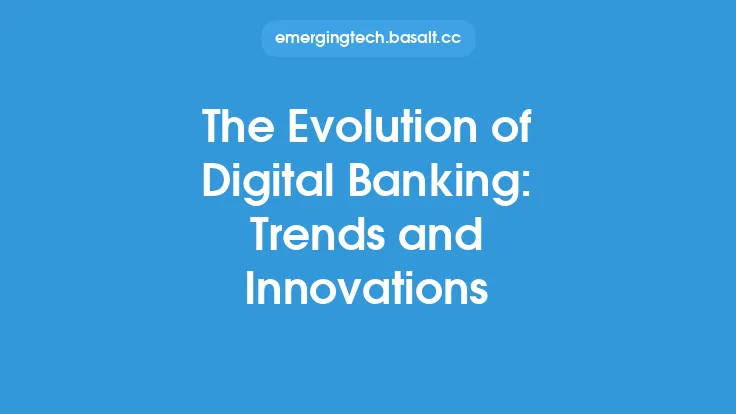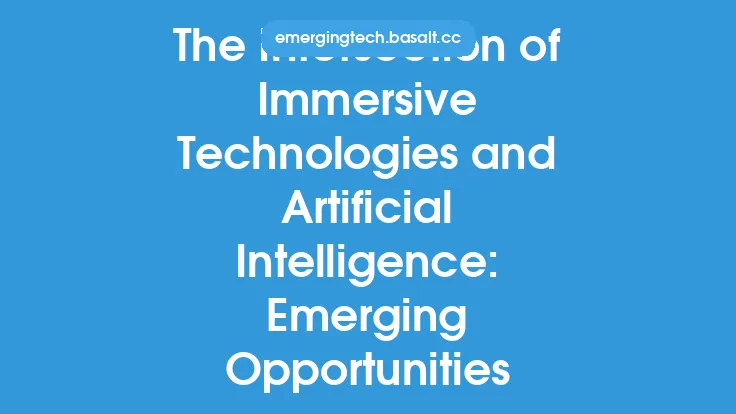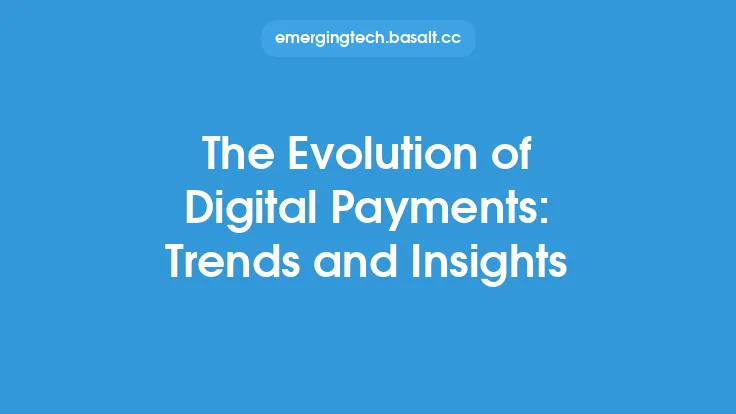The digital banking landscape is undergoing a significant transformation, driven by emerging technologies and innovative strategies. As the financial services industry continues to evolve, banks and financial institutions are leveraging cutting-edge technologies to enhance customer experience, improve operational efficiency, and reduce costs. In this article, we will delve into the future of digital banking, exploring the emerging technologies and strategies that are shaping the industry.
Introduction to Emerging Technologies
Emerging technologies such as blockchain, artificial intelligence, and the Internet of Things (IoT) are revolutionizing the digital banking landscape. Blockchain technology, for instance, is being used to develop secure and transparent payment systems, while artificial intelligence is being leveraged to enhance customer service and improve risk management. The IoT is also being used to develop innovative banking solutions, such as mobile payments and wearable devices. These technologies are not only improving the customer experience but also enabling banks to reduce costs and improve operational efficiency.
Cloud Computing and Digital Banking
Cloud computing is another key technology that is transforming the digital banking landscape. By leveraging cloud computing, banks can reduce their infrastructure costs, improve scalability, and enhance customer experience. Cloud-based banking solutions enable banks to provide customers with secure and convenient access to their accounts, anytime and anywhere. Additionally, cloud computing enables banks to quickly deploy new services and applications, reducing the time and cost associated with traditional on-premise infrastructure. Cloud-based banking solutions also provide banks with real-time analytics and insights, enabling them to make data-driven decisions and improve their overall operations.
Application Programming Interfaces (APIs) and Open Banking
Application Programming Interfaces (APIs) are also playing a critical role in the future of digital banking. APIs enable banks to provide customers with secure and convenient access to their accounts, while also enabling third-party developers to build innovative banking applications. Open banking, which involves the use of APIs to enable secure and controlled access to customer data, is also becoming increasingly popular. Open banking enables customers to share their financial data with third-party providers, enabling them to access a range of innovative financial services and applications. APIs and open banking are not only improving the customer experience but also enabling banks to reduce costs and improve operational efficiency.
Digital Payments and Wallets
Digital payments and wallets are also transforming the digital banking landscape. Mobile payments, such as Apple Pay and Google Pay, are becoming increasingly popular, enabling customers to make secure and convenient payments using their mobile devices. Digital wallets, such as PayPal and Amazon Pay, are also becoming increasingly popular, enabling customers to store their payment information securely and make payments online and in-store. Digital payments and wallets are not only improving the customer experience but also enabling banks to reduce costs and improve operational efficiency.
Strategy and Implementation
To remain competitive in the digital banking landscape, banks and financial institutions must develop and implement effective strategies. This includes investing in emerging technologies, such as blockchain and artificial intelligence, and leveraging cloud computing and APIs to enhance customer experience and improve operational efficiency. Banks must also develop and implement effective digital payment and wallet strategies, enabling customers to make secure and convenient payments using their mobile devices. Additionally, banks must prioritize customer experience, ensuring that customers have secure and convenient access to their accounts, anytime and anywhere.
Challenges and Opportunities
Despite the many opportunities presented by digital banking, there are also several challenges that banks and financial institutions must overcome. These include ensuring the security and integrity of customer data, complying with regulatory requirements, and addressing the needs of underserved populations. However, by leveraging emerging technologies and innovative strategies, banks can overcome these challenges and capitalize on the many opportunities presented by digital banking. By prioritizing customer experience, investing in emerging technologies, and developing effective strategies, banks can remain competitive in the digital banking landscape and achieve long-term success.
Conclusion and Future Outlook
In conclusion, the future of digital banking is exciting and rapidly evolving. Emerging technologies, such as blockchain, artificial intelligence, and cloud computing, are transforming the digital banking landscape, enabling banks to enhance customer experience, improve operational efficiency, and reduce costs. By leveraging these technologies and developing effective strategies, banks can remain competitive in the digital banking landscape and achieve long-term success. As the digital banking landscape continues to evolve, it is likely that we will see even more innovative technologies and strategies emerge, further transforming the industry and improving the customer experience.





